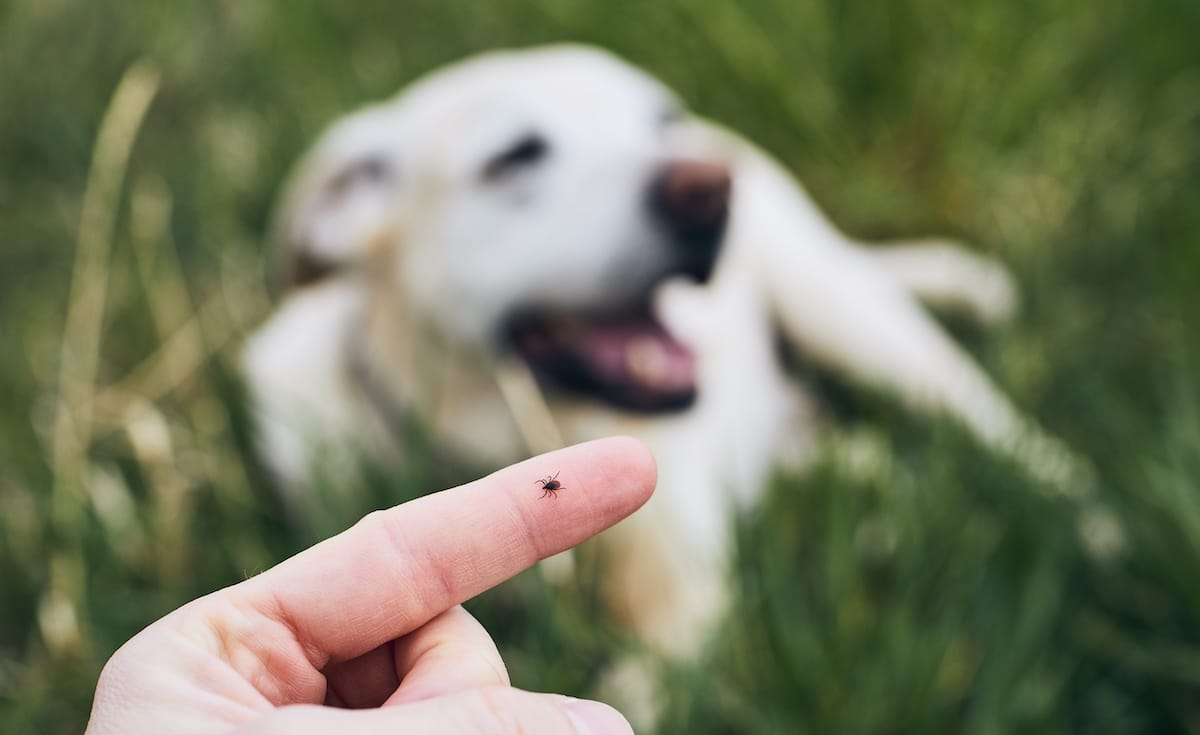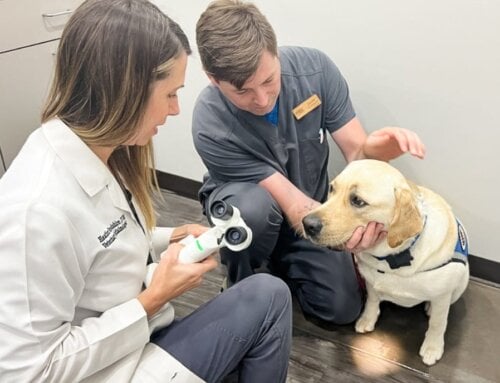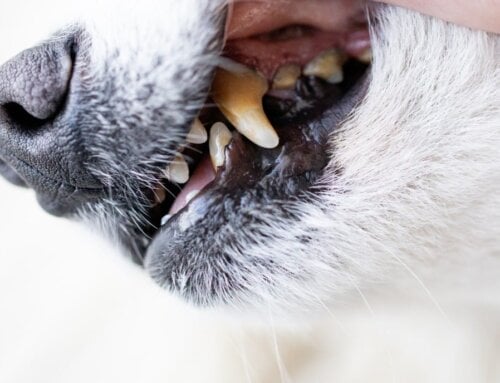We love these long summer days, giving us more time outside playing, exploring and hiking with our pets in the great outdoors. Just as you would check yourself for ticks after tromping through woodsy areas, you should examine your dog’s coat as well. In addition to causing serious medical conditions such as Rocky Mountain spotted fever and Lyme disease, ticks can generate a disease known as ehrlichiosis, or “tick fever” in dogs.
Ehrlichiosis is transmitted by a bite from an infected common brown dog tick. It can cause alarming physical conditions, as well as ocular issues including uveitis, retinal disease and corneal opacities. The incubation period is 8 to 29 days after exposure, and there are three stages of the disease:
- Acute/early disease, with symptoms of fever, swollen lymph nodes, respiratory distress, weight loss, bleeding disorders, and occasionally, neurological disturbances.
- Subclinical stage, in which the organism is present, but not causing outward signs of the disease.
- Clinical or chronic stage, when the immune system is not able to eliminate the organism. Dogs are likely to develop a host of problems such as: anemia, bleeding episodes, lameness, eye problems (including hemorrhage into the eyes or blindness), neurological problems, and swollen limbs.
Early detection, diagnosis, and treatment can increase chances for saving vision and even the life of a pet with ehrlichiosis. Certain antibiotics, such as doxycycline, are quite effective. The treatment time generally lasts for four weeks.
Prevention, by far, the best way to avoid “tick fever,” by following these safeguards:
- Familiarize yourself with ticks in your area.
- Use veterinary-approved preventative measures such as combined flea/tick prevention treatments.
- After your dog has been outdoors, check them for ticks.
- If you find ticks, remove them immediately using tweezers to safely disengage them from your dog’s skin.
- Ask your veterinarian about testing your dog annually for tick-borne diseases.
“Tick fever” is not spread between dogs and humans, but humans can get the disease if bitten by an infected tick. So, just be careful when you’re out and about with your dog, and be sure to check carefully for ticks at the end of the trail.
















